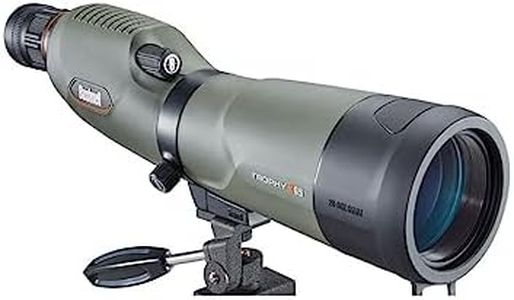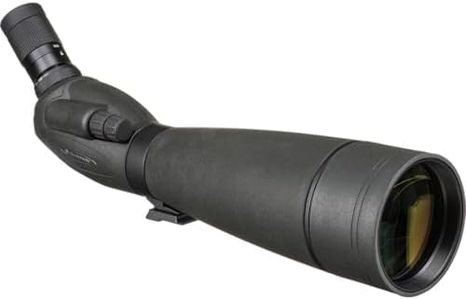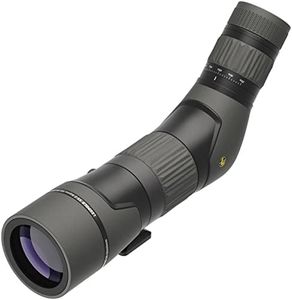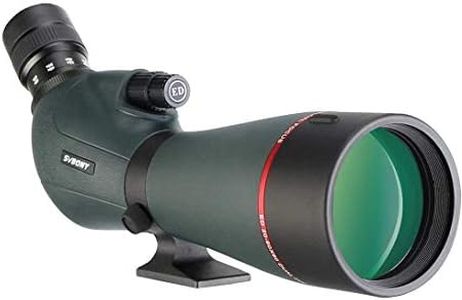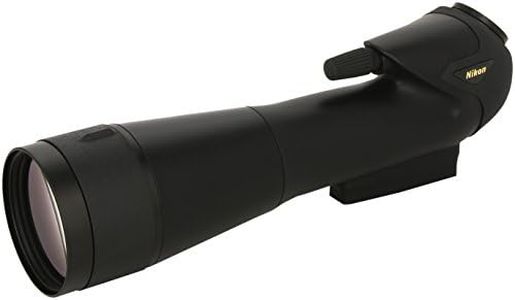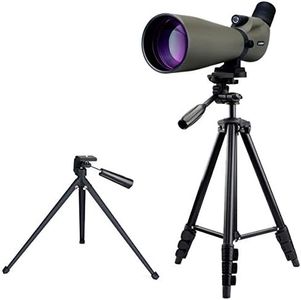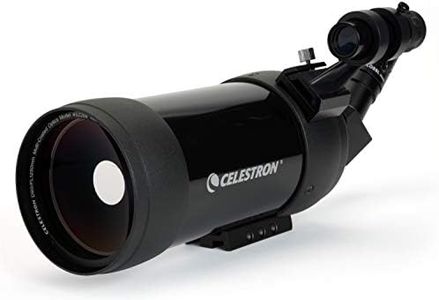We Use CookiesWe use cookies to enhance the security, performance,
functionality and for analytical and promotional activities. By continuing to browse this site you
are agreeing to our privacy policy
10 Best Compact Spotting Scopes
From leading brands and best sellers available on the web.Buying Guide for the Best Compact Spotting Scopes
Choosing a compact spotting scope can be a rewarding experience if you know what to look for. These are handy optical tools often used for birdwatching, target shooting, hiking, or nature observation. Because of their portability, compact spotting scopes trade some features for convenience, so it's important to define your needs before shopping. Think about when, where, and how you plan to use your spotting scope—that will help guide your decisions on the specifications that matter most for you.Magnification RangeMagnification tells you how much closer an object will appear compared to viewing with the naked eye. In compact spotting scopes, magnification usually ranges from around 10x to 40x. Lower magnification (10x-20x) provides a wider field of view and is easier to keep steady, making it suitable for general nature watching and viewing moving subjects. Higher magnification (up to 40x) allows you to see more detail at longer distances but requires steadier hands or a tripod and may result in a dimmer image. Pick the range that best matches your typical viewing distance and activity.
Objective Lens DiameterThe objective lens diameter, measured in millimeters, affects how much light the scope can gather, impacting brightness and image clarity, especially in low-light conditions. Compact models usually range from 40mm to 60mm. A smaller diameter makes the scope lighter and easier to carry but lets in less light, which might limit performance at dusk or dawn. A larger objective lens gives brighter images but adds bulk. Think about when you'll use the scope most—choose a smaller diameter for daylight and a larger one if you need performance in dim conditions.
Optical Quality and CoatingsOptical quality depends on the type of glass and special coatings used on lenses to reduce glare and improve clarity and color. Fully multi-coated lenses usually provide the best brightness and image fidelity. In compact spotting scopes, these coatings become even more important because the smaller lenses gather less light. Look for terms like 'multi-coated' or 'fully multi-coated' if you value sharp, high-contrast images. This feature is especially important for detailed observation and low-light use; casual users observing during bright daylight may not notice as much difference.
Weight and SizeThe main appeal of compact spotting scopes is portability. Their weight and size vary, typically ranging from around 1 to 3 pounds. Lighter, shorter scopes are easier to pack and carry on long hikes or travel, but might sacrifice some stability or optical performance. Heavier compacts may offer a steadier view and possibly better image quality. Consider how far you'll be carrying your scope and how much gear you need to bring—opt for the lightest model that still meets your durability and performance requirements.
Focusing MechanismSpotting scopes use different focusing systems, such as knob focus or collar focus. Knob-style focuses allow fine adjustments and are easy to use with one hand, which can be convenient for quick views. Collar focus systems rotate the barrel and may be faster for big changes but less precise. If you expect to change focus quickly (like tracking birds), look for a smoother, easily accessible mechanism. For detailed, steady viewing, a fine, slow-focus knob may be better.
Waterproofing and DurabilityCompact spotting scopes are often used outdoors, so weather resistance is important. Waterproofing protects the scope from rain, while fog-proofing ensures the lenses don't mist up during temperature changes. Rugged construction, such as rubber armor, helps prevent damage from drops or bumps. If you plan on using your scope in variable or harsh outdoor settings, prioritize these features for long-term reliability. For occasional indoor use, this may be less critical.
